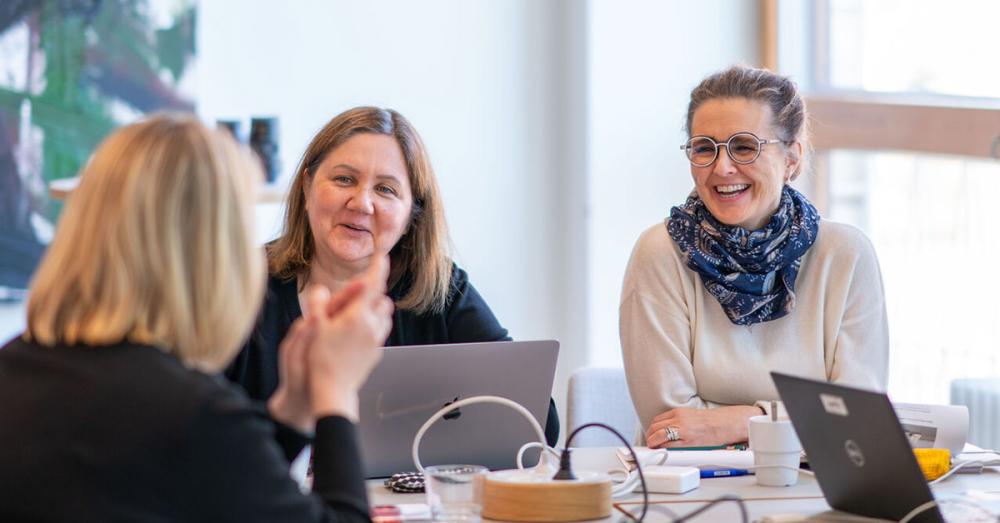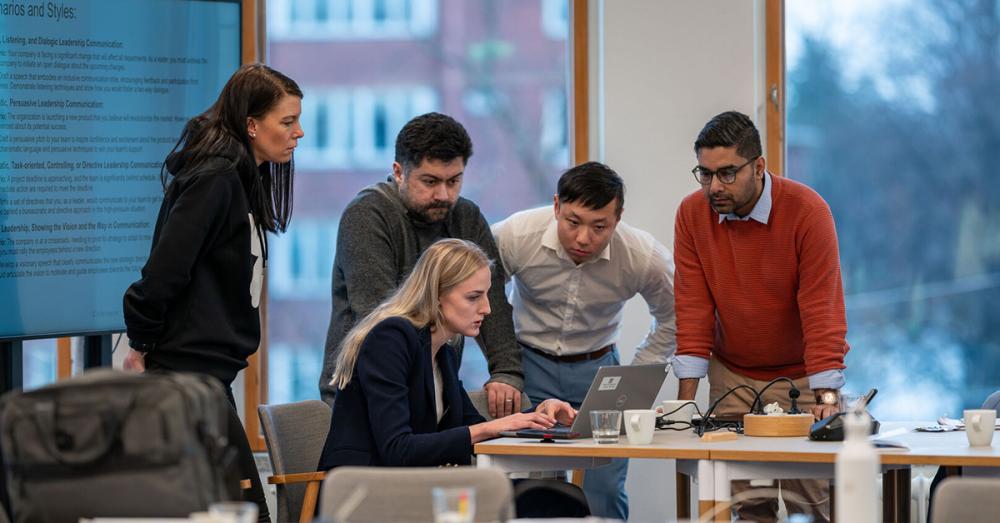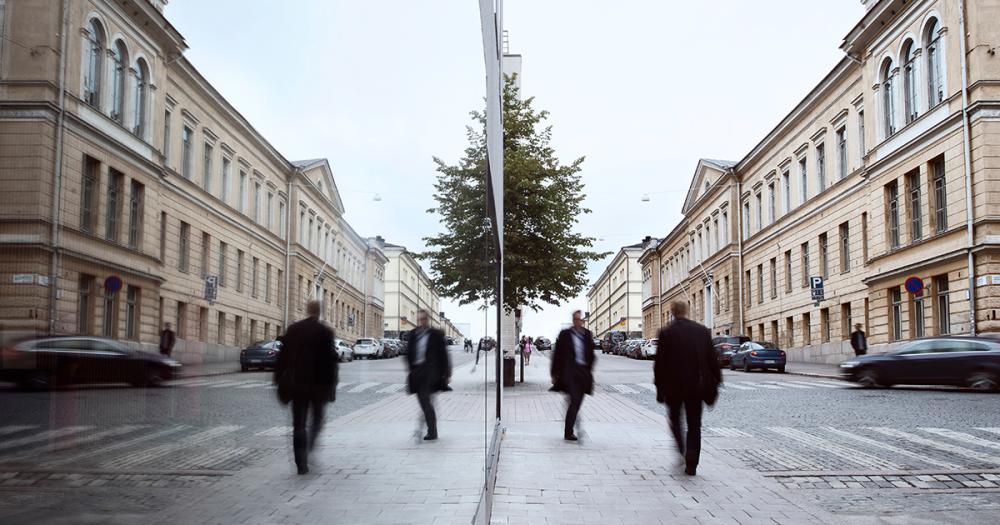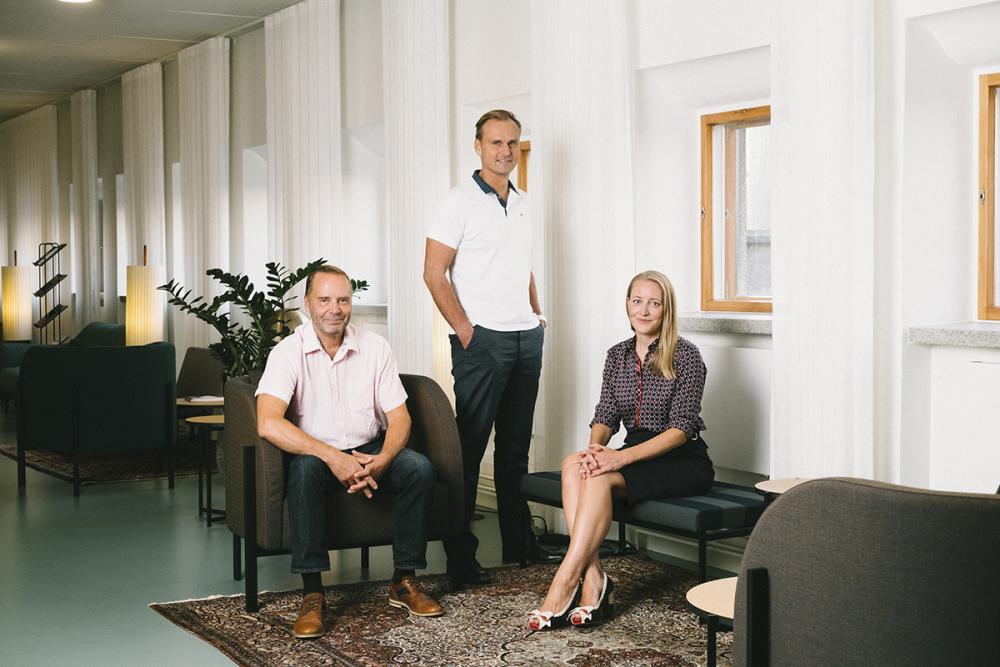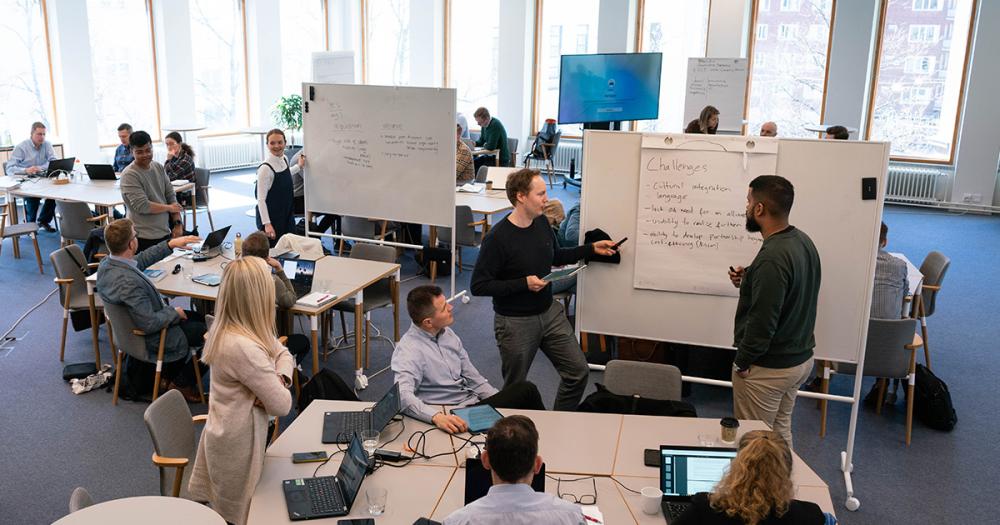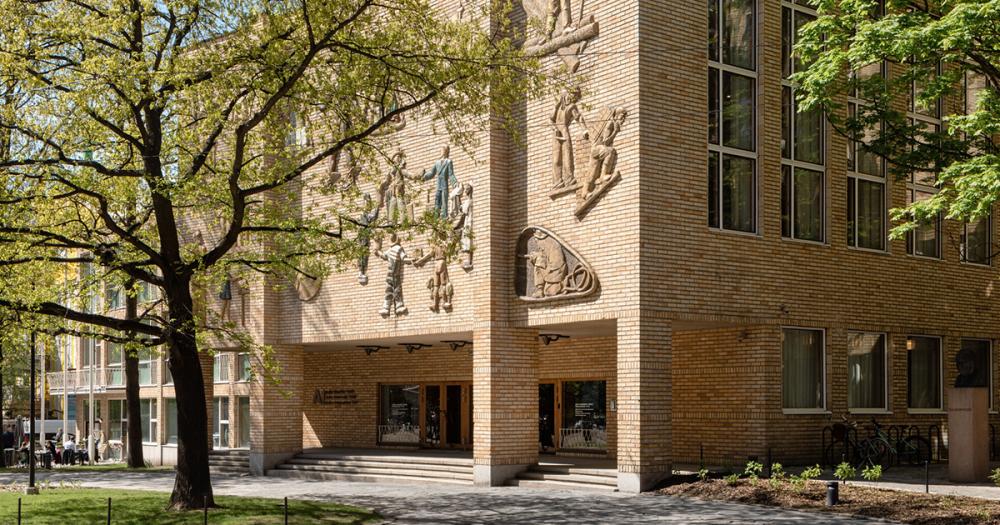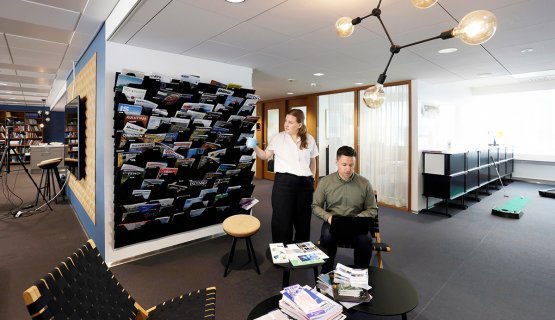Karoliina Muukkonen was walking through the Old Church Park in Helsinki in the spring sunshine when the phone rang.
Her new supervisor asked if Muukkonen had everything in place for her job beginning that day. Of course. Muukkonen had received the office blueprint and instructions for picking up a plastic bag with her name, containing a laptop and other necessities.
The office lights were set off by the motion detector as Master of Science in Engineering Muukkonen stepped into the empty space. She grabbed the bag, returned home, opened her laptop and began her new work as an advisor on bioenergy at Finnish Energy, which is the trade association for the Finnish energy industry sector. Finnish Energy covers approximately forty employees. Most of them work as experts.
It was April 2020, and Finland was experiencing the Covid-19 lockdown. So this is how I start my work, Muukkonen thought. I’ll push through the summer and get a handle on things in the fall, once the situation normalizes, she decided.
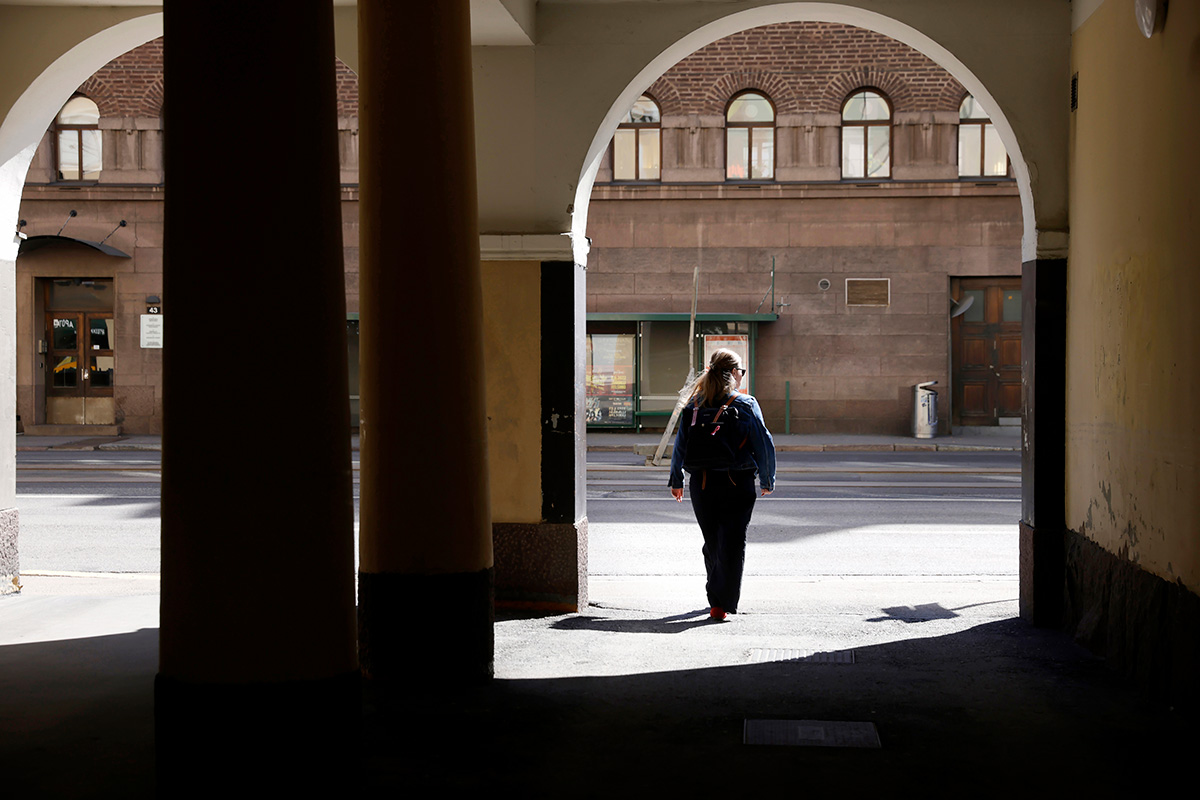 |
| Karoliina Muukkonen says that leaving a job during the remote period was easier than before, since people were already apart from the work community. Photo: Liisa Takala |
The return to normal never came, but Muukkonen realized that the exceptional circumstances took the pressure off starting a new job. It was a big relief. Everyone was just trying to survive, like her.
Before Covid, familiar routines also engaged us with work and the employer
Do you still remember what your work was like in 2019? You went to the office in the morning. The ritual was called commuting. For meetings, people went into meeting rooms, and colleagues were asked out for lunch. Everything happened live.
The most progressive companies had practices for remote work. Remote work usually involved requesting permission.
Salary does not engage in the long run if the work itself is not appealing."
Daily commutes, lunch buffets and even some colleagues could be irritating at times, but familiar routines also engaged us with work and the employer. Everyone around was signaling that we were doing something important together.
A thick, almost visible social network was entwined around actual work tasks.
Now there are gaping holes in that network. In places, it has become so loose that a network of human relations has been replaced by faces speaking on screens, a calendar and list of work tasks.
Like Finnish Energy’s Karoliina Muukkonen, many others have begun in their new work remotely. This has made companies ponder how personnel can be engaged at a time like this. How to engage people who are reconsidering the purpose of work, and even life. What are the questions you should be asking an employee, what should they be offered?
What kind of circumstances allow employees to do well and inspire them when uncertainty and a state of emergency keep following each other and things appear to be in motion?
"At first, I tried to go to the office to meet people, but hardly anyone was there"
In April 2021, Master of Science in Engineering Pekka Rintala began work as Karoliina Muukkonen’s colleague at Adato, an adult education company operating under Finnish Energy. Rintala is a product manager in charge of the Certified Power Trader Education program. He also started his work during the pandemic.
“At first, I tried to go to the office to meet people. But hardly anyone was there,” Rintala reminisces in a video interview. Back then, Finland was routined at remote work.
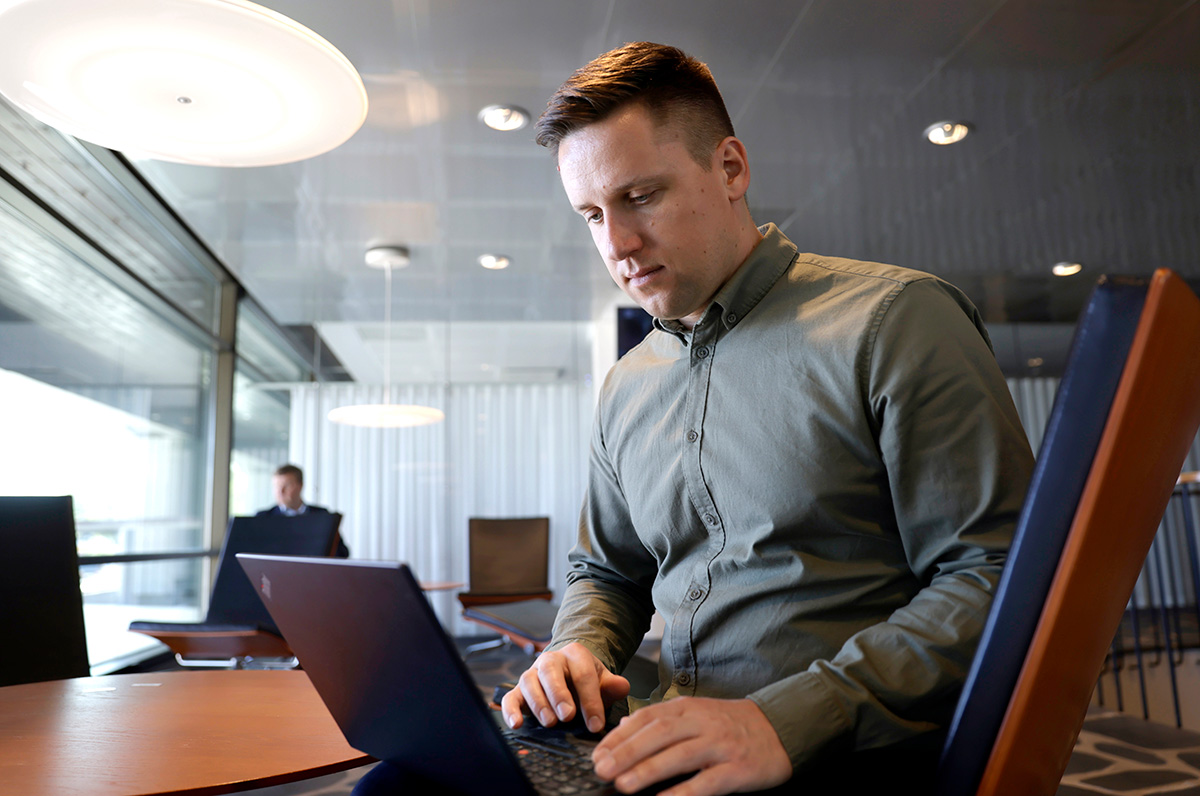 |
| Pekka Rintala has noticed a shift in employers' thinking compared to ten years ago. "They understand that people have other things besides work, too. Or at least the employers worth working for do." Photo: Liisa Takala |
Thankfully there were “small happenings” in the summer: an afternoon picnic at Tähtitorninmäki, an exercise day at the Hietaniemi beach.
“There I played beach volley and got to know people. You can’t approach everyone the same way. First you need to get a sense of the person.”
Muukkonen believes that leaving a job during the remote period is easier than before, since people are already apart from the work community."
Both Muukkonen and Rintala have a feeling that many people are currently changing jobs. Rintala had considered a new job even before the pandemic. He wanted to develop and did not find the old workplace to provide enough support for change.
“I even gave feedback on it. I needed a challenge. Then came the coronavirus and remote conditions. I made a New Year’s Resolution in 2020 to have a new job in 2021. I picked myself up and began applying.”
Muukkonen believes that leaving a job during the remote period is easier than before, since people are already apart from the work community.
“All that’s left is the job. Then you can see more clearly if it’s the job you want.”
How employees' relationship with work is changing?
For a while now, the question has been: how to find the so-called best people? The newer question is: how to retain the best people?
The things that make a person stay at a job are, of course, personal. One rising engagement factor is the question of balancing work and other life. Increasingly many find it important that work is shaped around life, rather than life taking place around work.
Another topic of negotiation is the place of work. How much should there be office work, how much
remote work? People hope for different models, and flexibility has become a basic requirement There is also a shortage of knowledge workers, which gives employees a bargaining advantage.
When looking at the bigger picture, people talk about how employees’ relationship with work is changing.
According to experts, we are experiencing a transformation period in work, and not just because of the pandemic. Previous transformation periods have included the 1960s, when women entered the workforce in large numbers, and the 1990s, when the thought of lifelong employment faded in the midst of globalization and the depression.
Researchers say that as a result of all this, we are currently renegotiating the psychological contract on work: what we expect to gain from work and what we are willing to give. In practice, this means that many change jobs."
The link between work and place and time had been loosened by digitalization even before the pandemic, but the pandemic accelerated the change, making work independent of place the mainstream.
Employers and employees compromised significantly to keep the pandemic somewhat reigned in. It was both frightening and inspiring. Frightening, because the future was foggy. Inspiring, because it revealed what people are capable of in tough circumstances. We’ll manage!
Researchers of working life say that as a result of all this, we are currently renegotiating the psychological contract on work: what we expect to gain from work and what we are willing to give.
In practice, this means that many change jobs. At the same time, the relationship with work may also be reshaped.
At least employers "worth working for" understand that people have other things beside work
For Karoliina Muukkonen, flexibility is “really important” and also conveys trust at the workplace.
“Work should not dictate life but be a balanced part of it,” she states.
Pekka Rintala also does not find work to be life’s top priority. Although he had always wanted to do his work as well as possible, children and well-being came first. And work does not go smoothly if one is not doing well.
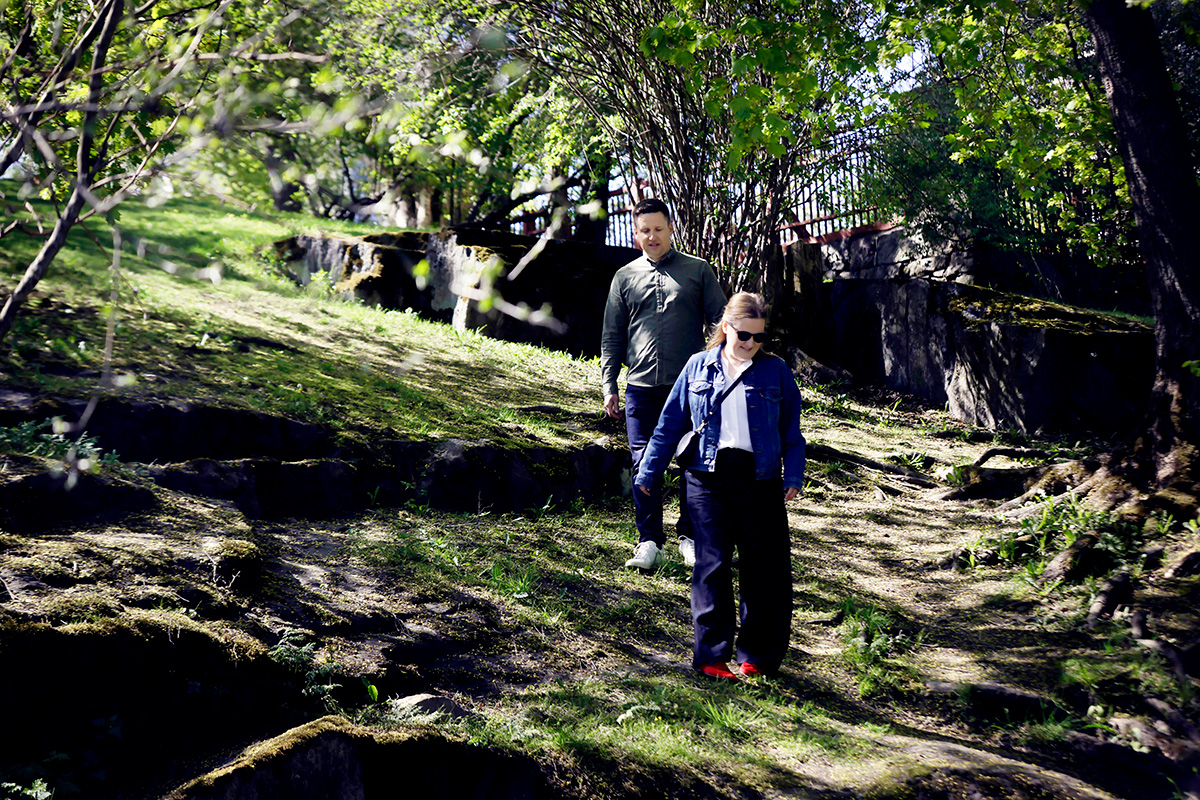 |
| The office of Pekka Rintala and Karoliina Muukkonen's workplace, Finnish Energy, is close to Tähtitorninmäki in Helsinki. Photo: Liisa Takala |
Rintala’s morning walks are transitions into work. He always tries to eat a decent lunch and takes breaks. He started going to yoga classes near his home when he noticed that sitting down constantly was taking its toll on his well-being. Yoga relaxes and gives a good night’s sleep. Rintala also does cycling and camping.
“I like to be outside.”
Rintala has noticed a shift in employers’ thinking compared to ten years ago.
“They understand that people have other things besides work, too. Or at least the employers worth working for do. Personnel development has also become a priority.”
Organizations have realized this: you simply need to hold onto people
Muukkonen and Rintala are individual examples of people who switched jobs during the pandemic. In the US, we are talking about masses.
There the pandemic, along with the transformation of work and life priorities, have manifested as four million people resigning every month since summer 2021. The phenomenon was dubbed The Great Resignation.
The group includes early retirees, and especially younger generations are changing jobs. They look for work that fits their life situation, values – and provides better pay. The economic expansion period has also seen a record number of jobs available.
Resignations have been interpreted as a sign of people considering what is relevant in life. Setting work above everything else no longer seemed important with a deadly pandemic raging around us.
There have also been more practical reasons: lockdowns have made child care more inaccessible, outlooks in different industries have become uncertain, overtime work in healthcare has reached insane proportions, and so forth.
Now The Great Resignation has advanced into The Great Reshuffle. Many have already changed jobs twice."
Now The Great Resignation has advanced into The Great Reshuffle. Many have already changed jobs twice.
The European labor market is stiffer compared to the US, and thus the resignation wave has not been nearly as visible as there.
Also Europe is witnessing an examination of the relationship with work. Remote work has crumbled the lines between work and free time and the boundaries between the professional and private identities.
The boss can be seen in an entirely new perspective with their neon-colored laundry hanging in the
background at a remote meeting. And those cutie cats curling their paws on keyboards!
The upside of general restlessness is that it facilitates trying new things. And organizations have indeed realized that you simply need to hold onto people.
Companies have traditionally arranged exit interviews for resigned employees. Now also “Stay With Us” interviews have become a thing. They involve the employer asking every few months what makes the employee want to stay at the company.
Companies have also established alumni networks for former employees – instead of considering ex-employees traitors, they are increasingly seen as resources. Companies also attract boomerang employees to return, i.e those who have left.
This is what it means to renegotiate the relationship between work and employees.
Leaders need to know their team members and the kind of management they need
Karoliina Muukkonen highlights management as a factor influencing engagement.
“We have wonderfully low hierarchy at our organization. Our CEO sometimes checks to see if something really is so. He listens and has time,” she describes.
Muukkonen finds it particularly important that the CEO says if he does not know something.
“Changing situations include many matters, which no one is familiar with. It is important that the leader lets on if they do not know either. Being uncertain and confessing that you do not know what will happen next week are two different things. Running around and creating panic is not helpful. I would quote President Sauli Niinistö, who says that decisions must be made quickly but not in a rush,” Muukkonen says.
She finds it crucial that bosses know their subordinates and the kind of management they need. Someone may benefit from direct feedback, while another will easily shut down. How can a superior tell how a subordinate reacts to feedback remotely? How can a difficult personal situation arise if the company does not even turn cameras on for meetings?
How can superiors, who have only met their subordinates once, know them?"
“How can superiors, who have only met their subordinates once, know them?” asks Karoliina Muukkonen.
She thinks it is also an investment into the future – that is, engagement.
“All superiors may not think that individuals need to be managed differently.”
Money alone is not a long-term motivator
Muukkonen’s example also connects work engagement with leadership, working culture, hierarchies, atmosphere, communications… Engagement truly is a combination of things. An employee is engaged once they experience management to be fair on a personal level.
A good atmosphere at the workplace and work community engages. Wonderful colleagues are more precious than gold.
Engagement truly is a combination of things. An employee is engaged once they experience management to be fair on a personal level."
Possibilities for advancing engages. The possibility to improve one’s skills and establish networks engages.
What about money, which has traditionally been considered the cornerstone of engagement: contribution for you, pay for me?
Appropriate compensation for work is a basic requirement in the current employees’ market. But as Muukkonen and Rintala say, money alone is not a long-term motivator. In terms of monetary compensation, the amount, as well as how it’s given, matter.
According to studies, it is better to pay 300 euros once in ten months than 600 euros once in 20 months.
Small, concrete rewards become more significant when the employee finds that the compensation has been thought out and involves effort.
The importance of feeling that you're important
For Karoliina Muukkonen and Pekka Rintala, it is a basic assumption that monetary compensation at work is appropriate.
But this is just the starting point. Salary is not a long-term engagement factor if the work itself is not motivating enough.
What matters is that the employer communicates to the employee that they are valuable to the organization.
“Get the feeling that a regular Joe can’t replace me in just a heartbeat. That I matter,” Rintala states.
The feeling of being important may come from a dinner at the employer’s expense during a team night, or the employer simply making an effort, arranging something in the first place.
“It’s kind of the same when you go to a friend’s house and they have prepared the food themselves. Even if it’s not gourmet food, I truly appreciate the effort and thought,” Rintala points out.
Things have changed and now business goals are aligned with themes of emotions
Senior Advisor at Aalto University Executive Education, Pia Lappalainen, sees emotions as the key to employee well being and thus also the company’s success and engagement.
Lappalainen is also a Docent at National Defence University and LUT University. Lappalainen’s doctoral thesis in engineering focused on leaders’ social competence and emotional intelligence.
Lappalainen offers dialogic leadership as a key to engagement. It is interactive and gives space to diversity, i.e multiple voices. She confesses that those working in organizations experience things in very different ways.
In medicine, numerous measurements of pain have been developed for patient work, and treatment and medication are based on a scale of pain.
“The doctor will no longer say that based on the size of the tumor, it cannot be very sore. We are moving from absolute measures of pain relief towards experientiality. The same applies to work,” Lappalainen notes.
In the work transformation, dialogic leadership creates psychological safety: people feel noticed and experience involvement."
“In the work transformation, dialogic leadership creates psychological safety: people feel noticed and experience involvement. They engage, unlike when receiving dictated instructions from above.
Lappalainen describes how she tried to get organizations involved in her research fifteen years ago. She eagerly presented her project, and the business director listened politely.
“Hey Pia, we have let go 500 employees today. Do you really think we’re interested in emotional intelligence?” the director finally replied.
Earlier on, emotions were seen as a disruptive factor in business life. Now business goals are aligned with themes of emotions.
“Previously we had to keep our eyes on output and amounts. Now we have noticed that they have contained a hidden resource all this time, one that could be utilized more. Many organizations have already understood this.”
Feelings have always been there, of course.
“Emotions are a biological part of us, a primitive function. Now they are allowed to emerge and be utilized.”
Emotional intelligence is not sentimentality. It can mean rational, solution-oriented activities, which don’t involve emotions as a visible aspect.
Empathy can be cognitive. You can understand that something is difficult for someone, even if you are unaffected.
Emotions are a biological part of us, a primitive function. Now they are allowed to emerge and be utilized."
Because of cognitive empathy, a superior knows when to ask how a problem could be solved together.
According to Lappalainen, the first step of engagement is to acknowledge different individual needs. A good leader recognizes different human types and leads them in differing ways.
“Leadership has long involved the mantra that you need to know yourself and your subordinates. We have now discovered that different needs require a compatible voice. Leading multiple voices at work does not happen by going to a remote meeting and the boss saying, open up. You must first build psychological safety. The boss must indicate that it is ok to tell them things. Everyone must feel like they are heard equally.”
Visiting the office is still important
"When I started remote work, I thought this is not what I want. But back then, nothing worked.”
Sounds familiar. Everyone can remember devices acting up, microphones being on and off at online meetings, participants sometimes seeing way too much, sometimes nothing. Even daily routines were off.
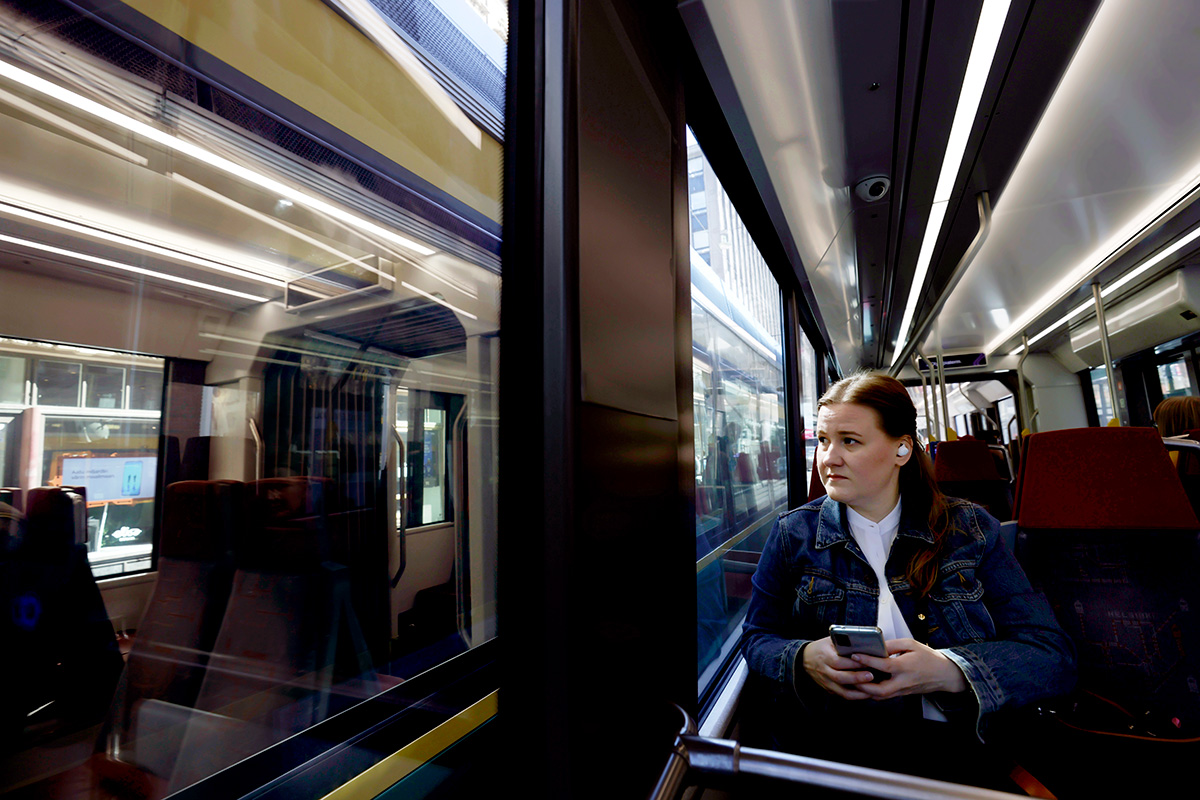 |
| Karoliina Muukkonen often listens to audio books on her way to the office. Photo: Liisa Takala |
Memes emerged, along with a feeling of survival, but it was also tormenting and exhausting.
“At the start of this year, I thought, why go to the office when everything can be done from home,” Pekka Rintala points out. Home had finally become a default workplace.
At home, he has good routines and devices work. Yet Rintala finds it important to visit the office a couple of days a week.
Muukkonen knows people who work at companies with no office work. “Does one even get attached to the community?”
Karoliina Muukkonen used to go to the office when she needed a big screen or two screens. Then she built a standing work station at home in her bookshelf.
“Mandatory attendance combined with long commutes would be a difficult combination. I used to live in Mankkaa, Espoo. It would feel terribly demanding to commute 40 minutes daily in one direction.”
Muukkonen currently lives in downtown Helsinki with a short commute. She also finds it important to visit the office for social reasons. It is nice when a colleague gets excited about meeting live at the office.
“Last time I spoke to a colleague for two hours about things we normally wouldn’t discuss on the phone, at least not for two hours.”
Muukkonen knows people who work at companies with no office work. “Does one even get attached to the community?”
"Now would be the opportune moment to think of ways of working and working together"
Home has become a comfort zone of work for many knowledge workers. It changes the relationship with work and the employer and may thus weaken commitment.
Perhaps work begins to lose its appeal once it turns into another chore at home. After a couple of years of remote work, many are so used to it that turning up at the office seems unnecessary. The importance of the work community has been somewhat forgotten.
How can management revive it?
Research Professor at the Finnish Institute of Occupational Health Jari Hakanen has sensed that not returning to the office is even considered a subjective right.
“It clearly takes effort to move back to the office. Both the employee and employer benefit from having real activities and working together in the future again,” Hakanen says.
According to Hakanen, it is not good to work just for yourself: work is not just a me project.
“As part of a work community, we are at work also for each other. For many, remote work has probably worked out great, but we may forget everything else related to work.”
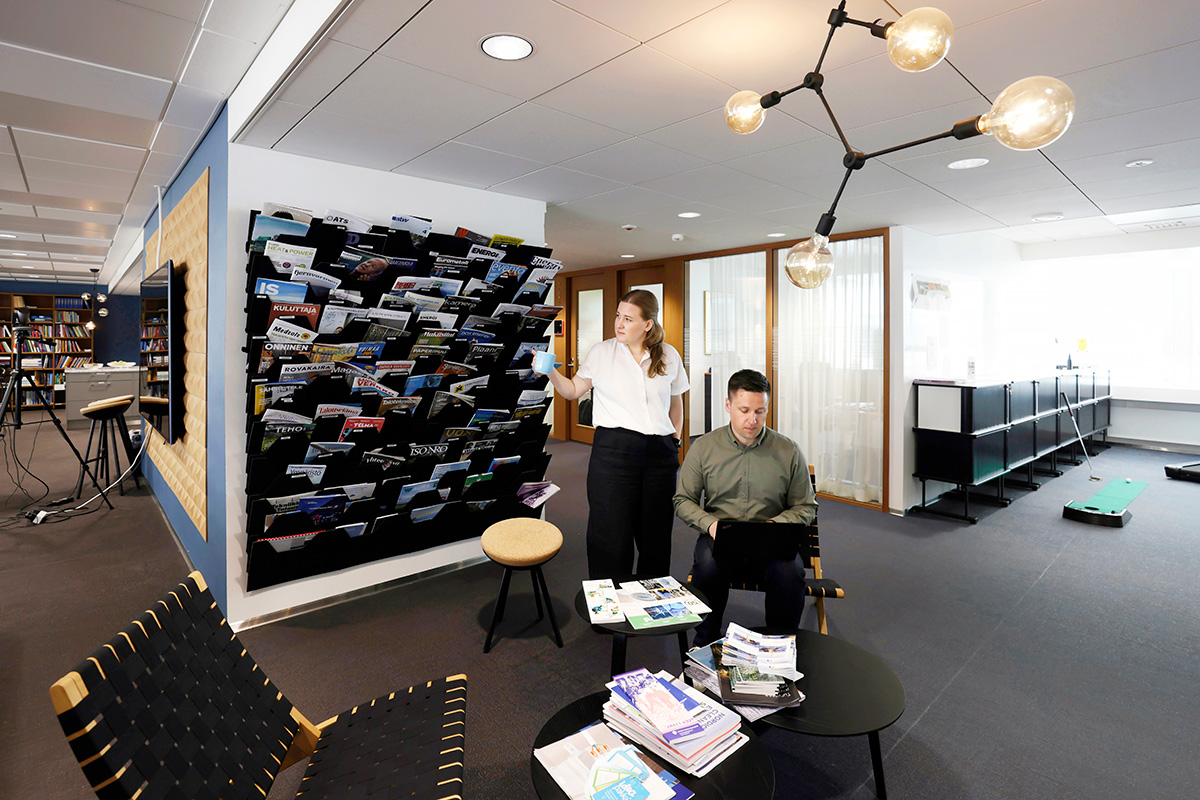 |
| Research Professor Jari Hakanen notes that work isn't just a me project. As part of a work community, we are at work also for each other. For Karoliina Muukkonen and Pekka Rintala the sense of community is one of the reasons that encourage them to work also in the office. Photo: Liisa Takala |
Hakanen shies away from tough directives about visiting the office, but he also finds it important that the place of work is discussed face to face. Work also justifiably includes going to the office. Durign the pandemic, the discussion centered on how it would transform working life. An infectious disease made hybrid work the mainstream, but otherwise major working life innovations have yet to emerge.
“I’m sure remote work will be more common in industries, which still have not introduced it. Later, we get to see if there are other permanent effects from the pandemic.”
On the individual level, many may have had major revelations.
A short working life experience before Covid-19 may have led to a thorough re-evaluation of values, whereas those who have worked longer have had an easier time adjusting. After all, they have seen countless changes take place at work.
The moment is ripe to improve working and leadership.
“Now would be the opportune moment to think of ways of working and working together. Is there enough energy, creativity and imagination for shared discussions? Could we be proactive? Will we learn something else besides remote working from this time?” Hakanen asks.
Remote connections may work well in your own, familiar and relatively small team, where you know each other well and have become accustomed to interpreting each other remotely during Covid times.
Is anyone apart from the individual employee coordinating the working day? Is it all remote meetings? How does having cameras off in a remote meeting, with no feedback, affect work motivation?"
“Work communities need contacts across teams and departments. How do remote connections work then? What about unofficial encounters? Developing new forms of collaboration has been difficult in the remote setting, and siloes are not beneficial for any workplace.”
Work intensification has increased with long days of meeting after meeting. If eight-hour Teams streaks are only cut off by five-minute bathroom and coffee breaks, you need to dig deep to find motivation.
According to Professor Jari Hakanen, this seriously calls for reflection.
“Is anyone apart from the individual employee coordinating the working day? Is it all remote meetings? How does having cameras off in a remote meeting, with no feedback, affect work motivation? These things should be discussed at the workplace smartly with the management involved," Hakanen advises.
A study by the Finnish Institute of Occupational Health reveals that commitment to work is high and people are clearly less inclined to quit their jobs when leadership serves others, practices are fair, and the relationship between employees and management is based on trust.
Caring is clearly important for employees. Having leaders and the work community look after each other during a moment of crisis is engaging. It keeps the social network around the work community intact. Many young people work remotely, who have only entered the workforce, sometimes during the pandemic. For them, leadership needs to be more than visualizing strategies.
One everyday method for engaging leadership is to ask: how’s it going, or how is the work task progressing. The task of leadership is still to guide, supervise, monitor, give feedback and intervene.
Communications has a central role.
“In a way, micro management has made a comeback,” Pia Lappalainen sums up.
People who changed jobs during the pandemic can't go back to what was - it does not exist to them
Two years of hybrid work have left their mark on Karoliina Muukkonen.
“Now it has been proven that this work can be done remotely.” Muukkonen wouldn’t feel too pleased if rules were suddenly drawn up forcing to work at the office without justified reason. The flexibility of work is very important to her.
“Of course it wouldn’t be an issue if the task needed me there. In that case I’d be present a great deal.”
The community is also an attractive reason to come to the office, it is the glue holding the work community together. Muukkonen is curious.
What will working look like in the future?
“I don’t know what this work has previously been like. I am used to having everything done remotely, starting from parliamentary hearings. In my mind, I have the structures and routines of remote work. How can I manage to do everything when I have to schedule meetings in town or take a business trip to Brussels?”
Indeed. There are so many people already at workplaces who have only experienced their job through remote or hybrid work, more people with this experience are on their way. They cannot go back to what was, because it does not exist for them.
Organizations need to be able to engage them in the current reality.
Did you enjoy this long form? If your answer is yes, you can find more long forms here.
